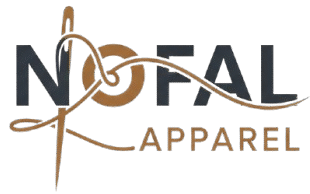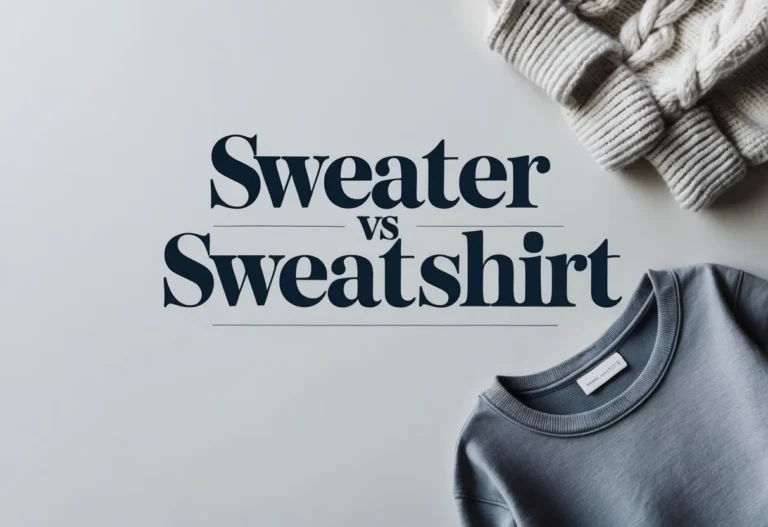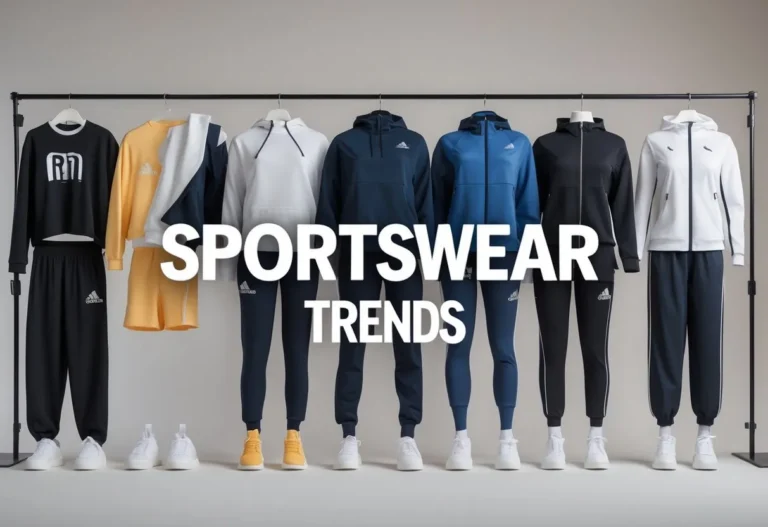Benefits of Fast Fashion makes the latest clothing styles affordable and easy to find for many people. It allows more consumers to wear trendy clothes without spending a lot of money. By quickly producing new designs, fast fashion keeps up with changing styles and helps shoppers stay current.

This industry also plays a role in creating jobs and supporting economic growth, especially in countries with growing apparel markets. It offers a wide variety of choices that encourage personal style and self-expression. Advances in technology and supply chains allow fast fashion companies to work efficiently while exploring ways to reduce their environmental impact.
Key Takeaways
- Fast fashion provides affordable and accessible trendy clothing.
- It supports economies through job creation and market growth.
- The industry uses innovation to respond quickly to trends and improve sustainability efforts.
Making Fashion Affordable and Accessible

Fast fashion has changed how many people buy clothes by offering trendy styles at prices most can afford. This approach increases customer options and allows fast fashion brands to reach shoppers around the world quickly and efficiently.
Affordability for Consumers
Fast fashion brands like Zara and Shein offer affordable clothing that fits current fashion trends. This pricing makes it possible for people from different income levels to refresh their wardrobes often without spending a lot.
Lower prices come from quick production cycles and cost-efficient supply chains, which reduce manufacturing and distribution expenses. Because of this, affordable clothing is widely available, giving more people the chance to try new styles and express themselves.
Budget-friendly options also help reduce the gap between high-end and everyday fashion. Consumers can find stylish items without waiting months or paying premium prices, making fashion more inclusive.
Democratization of Fashion
Fast fashion democratizes style by breaking down barriers that once limited fashion to wealthier groups. By offering up-to-date trends at lower costs, fast fashion brands make it easier for everyone to participate in fashion culture.
This shift challenges traditional ideas that fashion should be exclusive and expensive. More people can experiment with different looks and create personal styles thanks to the variety provided by fast fashion retailers.
The availability of trend-driven clothes at accessible prices empowers consumers to express their identity through their outfits more freely than in the past.
Global Reach Through E-Commerce
Fast fashion brands have embraced e-commerce, allowing them to sell to customers worldwide. Online platforms expand access beyond physical stores, reaching regions with limited retail options.
Major fast fashion companies use technology to speed up shipping and handle large volumes of orders. This global reach means shoppers from various countries can quickly get affordable, trendy pieces.
E-commerce also enables fast fashion retailers to respond rapidly to new trends seen on social media. Online channels drive demand, creating a global community connected through fashion across borders.
Rapid Response to Changing Trends
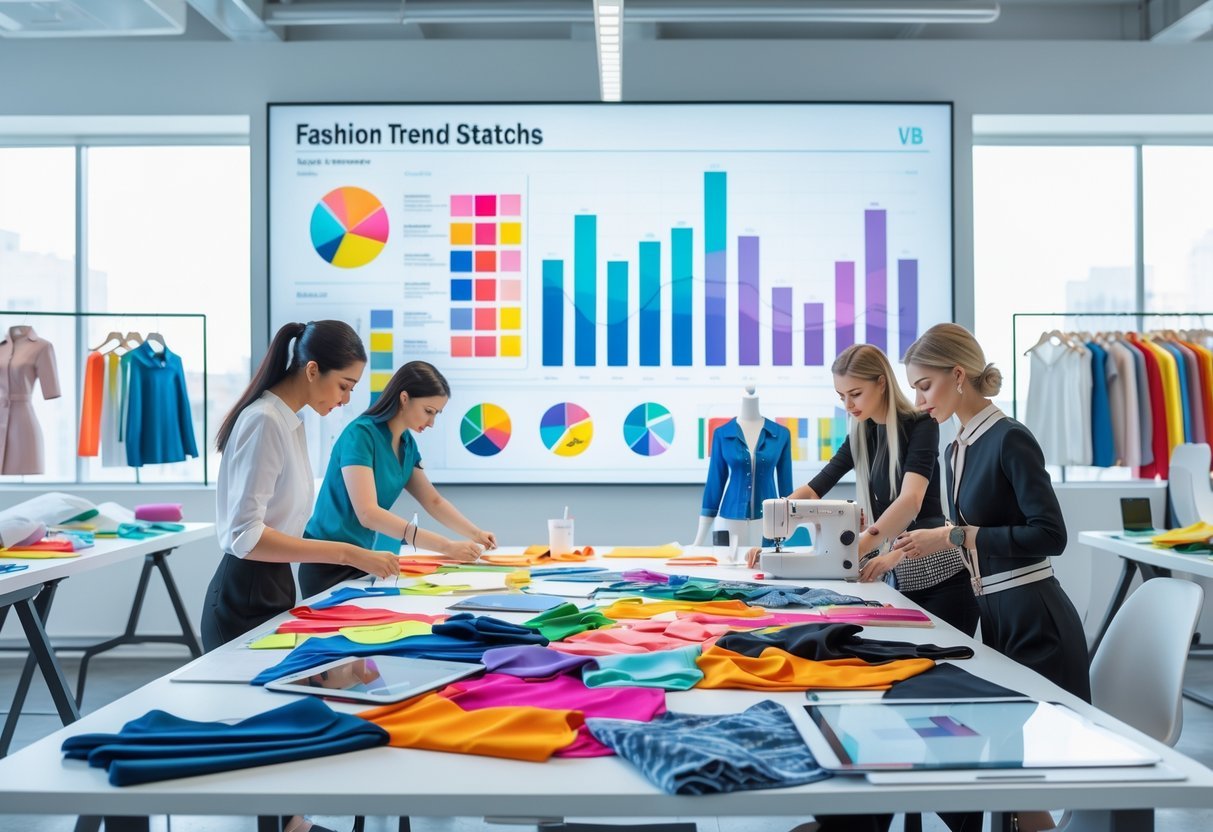
Fast fashion brands excel at quickly adapting to shifting consumer preferences. They use fast production cycles and strong connections to social media to keep trendy clothing constantly fresh and available.
Quick Turnaround for New Collections
Fast fashion companies release new collections at a much faster rate than traditional fashion. Instead of waiting for two main seasons, many brands now introduce new styles weekly.
This fast turnaround comes from efficient supply chains that shift from design to production in days or weeks. It helps companies meet demand for the latest fashion trends while reducing the risk of unsold stock.
Brands like Zara and H&M lead this model by producing many small, varied batches of clothing. This approach lets them react immediately to what customers want and keeps stores stocked with current styles.
Influencer and Social Media Engagement
Social media plays a key role in speeding up trend cycles. Influencers and celebrities showcase new looks instantly, creating rapid demand for specific styles.
Fast fashion brands monitor platforms like Instagram and TikTok to spot emerging trends. Using this real-time data, they launch trendy clothing aligned with popular posts and viral content.
Online brands such as Shein have built their entire model around social media engagement. This close connection helps them deliver ultra-fast, affordable new collections that appeal directly to their audience.
Economic Benefits and Job Creation
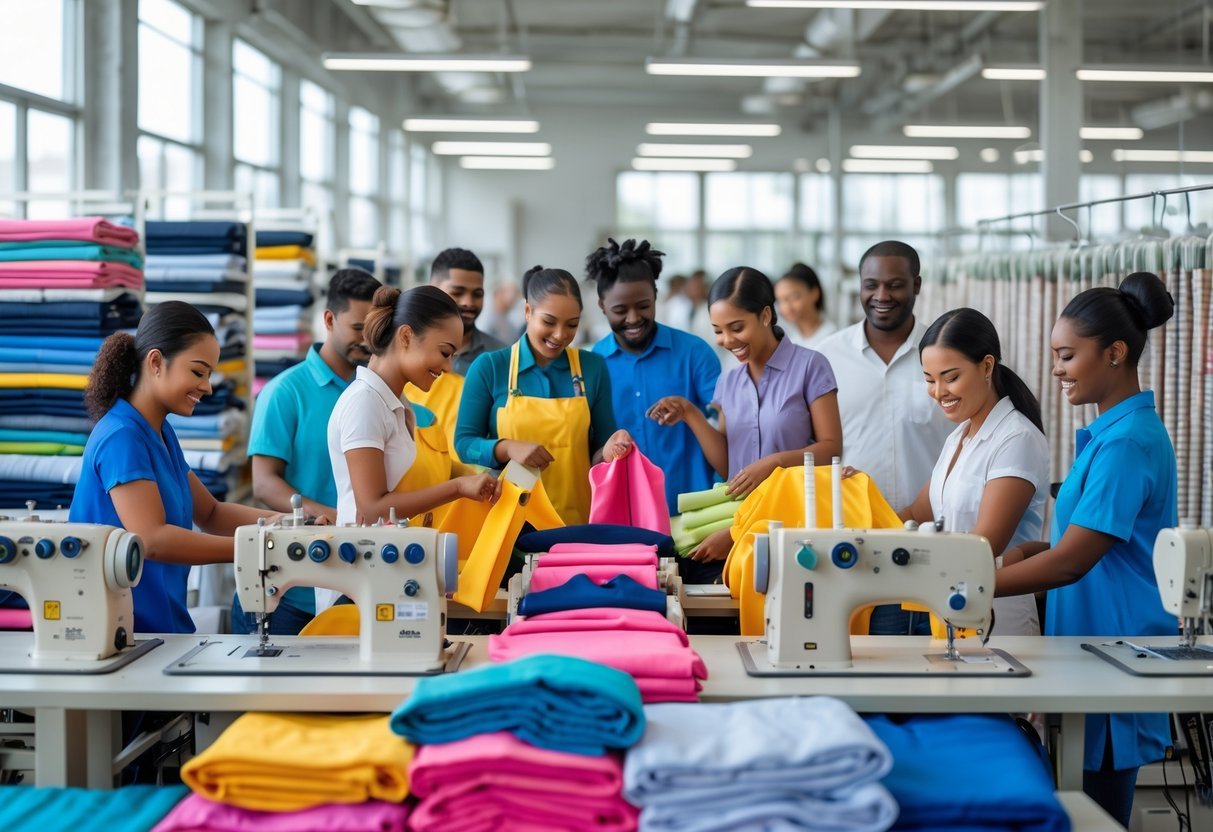
Fast fashion plays a strong role in economic growth by creating jobs and supporting many industries. It influences both local and global markets, helping people earn incomes and encouraging trade connections around the world.
Job Opportunities in the Textile Industry
The fast fashion industry provides many jobs in textile manufacturing, especially in developing countries. Factories hire large numbers of workers to meet the demand for quickly made, affordable clothing. This creates employment for people who might otherwise have limited options.
However, many of these jobs offer low wages and limited job security. Workers often face long hours and tough conditions. Despite this, the industry remains a vital source of income for millions. It also helps some regions build skills and infrastructure that grow their economies.
Boost to Local and Global Economies
Fast fashion supports economic vitality by expanding markets and increasing consumer spending. It helps local economies in producing countries by bringing in earnings through exports and creating business partnerships. These countries gain from new trade links and investments.
Globally, fast fashion encourages economic growth by making products more affordable and accessible. Retailers benefit from efficient supply chains that respond quickly to trends. This system creates demand for related industries, including shipping, textiles, and retail, boosting economic activity in many sectors.
Variety and Personal Expression
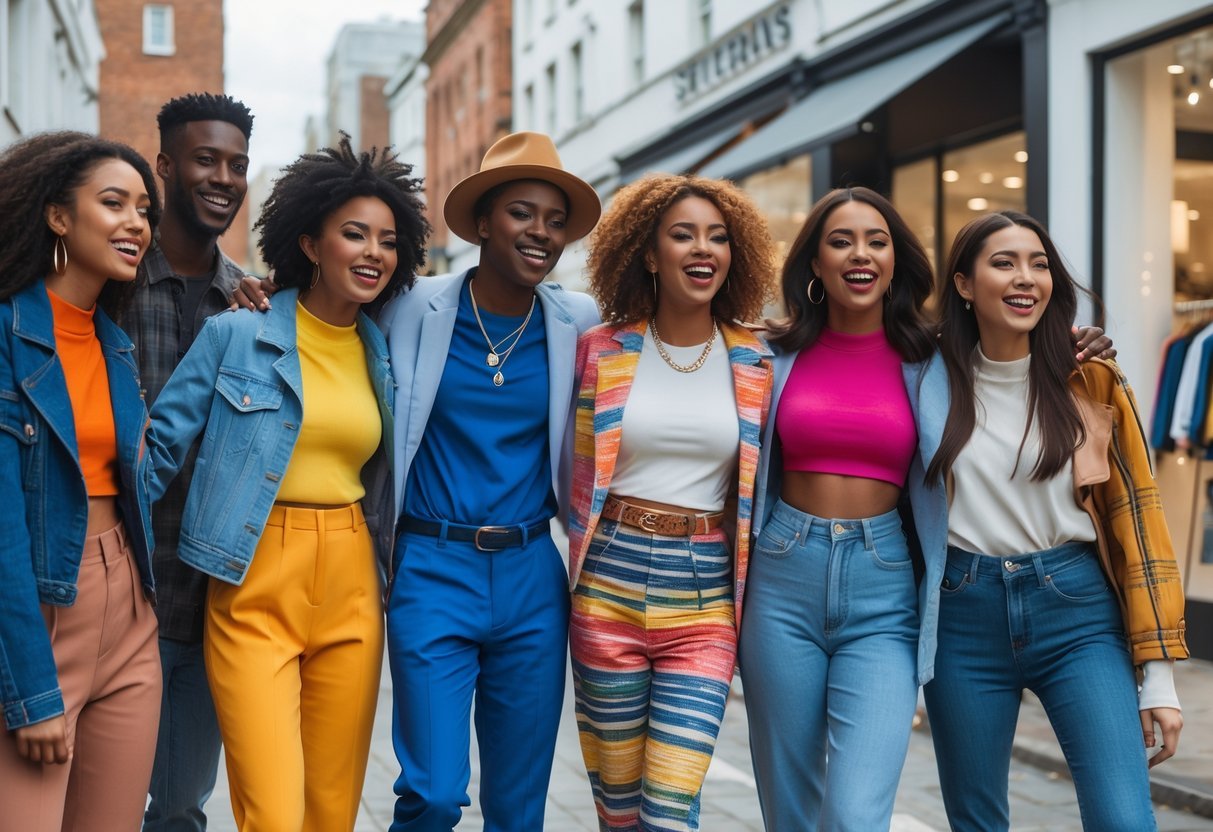
Fast fashion offers many choices that let people explore different looks and keep up with changing trends. It gives access to new styles frequently, so consumers can find clothing that fits their unique taste and mood without spending a lot.
Styles and Options for Benefits of Fast Fashion
Fast fashion brands release new collections often, sometimes multiple times a season. This means shoppers can find a wide range of styles, from casual wear to more daring, trendy clothing. The constant updates mean there are always fresh options to try.
These brands also offer clothing suitable for different tastes and occasions. This variety includes sizes, colors, and designs, making it easier for more people to find what fits them well. The affordability allows people to buy more pieces and experiment with looks they might not try otherwise.
Empowerment Through Self-Expression
Fast fashion helps people express who they are by letting them wear the latest trends without high costs. It supports creativity by making it easy to mix and match styles or follow fashion trends closely.
This access enables consumers to tell a story with their clothing, showing personality, culture, or mood. Fast fashion’s quick turnover means people don’t have to commit to one style for long. They can change their wardrobe often, which empowers them to feel confident in how they present themselves.
Innovation and Supply Chain Efficiency
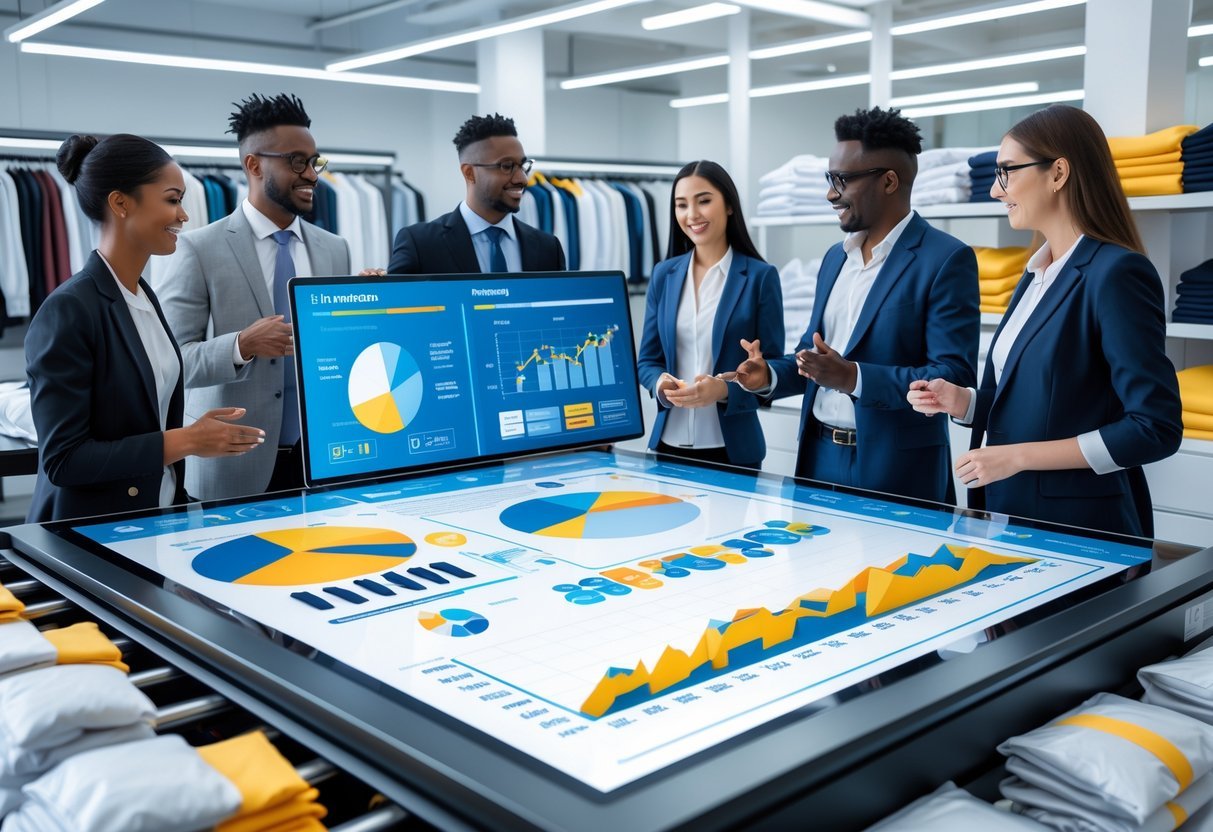
Fast fashion retailers rely on new methods to speed up production and streamline movement of goods. These advances reduce the time from design to store shelves and offer more tailored options for consumers without slowing down overall operations.
Enhanced Manufacturing and Logistics
Fast fashion businesses, like Zara, use vertically integrated supply chains to cut production time. By owning some factories close to design hubs, they can move from concept to finished product in as little as 2-3 weeks. This speed outperforms traditional fashion cycles that can take months.
Logistics also plays a key role. Companies place distribution centers strategically around the world to shorten delivery times and keep store inventories fresh. Advanced tracking and inventory management help match supply with real-time demand, reducing waste and stock shortages.
Automated systems for cutting and quality control ensure consistency while maintaining quick turnaround. This combination of manufacturing control and efficient logistics allows fast fashion brands to stay competitive and responsive to market trends.
Opportunities for Customization
Fast fashion’s fast supply chains enable brands to offer more customized products. Retailers test small batches of new items, using sales data to decide which designs to produce at larger scale. This reduces risk and waste compared to ordering large stock upfront.
Digital-first companies use machine learning to predict customer preferences and adjust offerings quickly. They personalize shopping experiences with tailored recommendations and localized inventory reflecting regional tastes.
These agile models allow brands to meet diverse customer demands rapidly without overproducing. This flexibility separates fast fashion from traditional retail, which relies on slower, less adaptive supply chains.
Sustainability Initiatives and Environmental Efforts
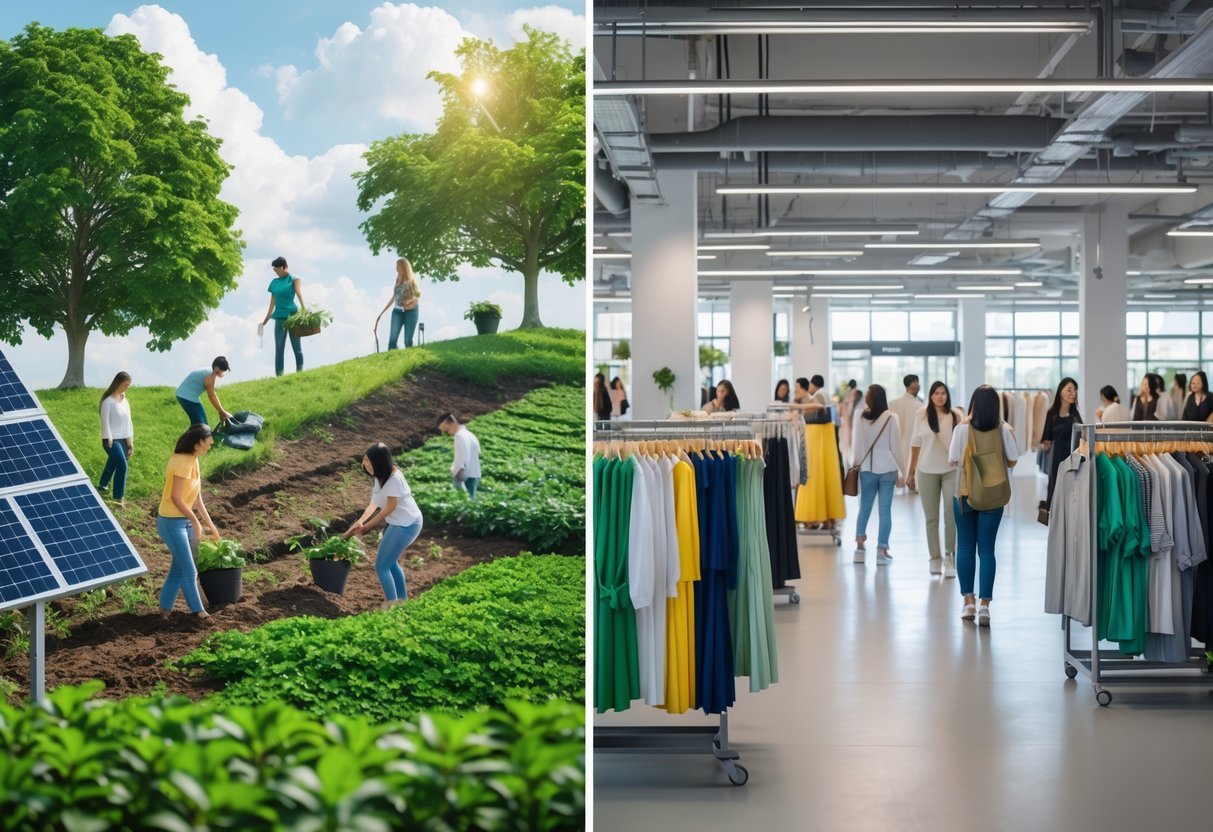
Fast fashion brands have started addressing their environmental impact through specific programs and new materials. These efforts target reducing textile waste and lowering carbon emissions while improving the lifecycle of clothing. Actions include recycling old garments and finding ways to use recycled fabrics in new products.
Recycling Programs and Recycled Fabrics
Many fast fashion companies now run recycling programs to collect used clothing from customers. They separate and sort the textiles to either resell, recycle, or donate them. This helps reduce textile waste, one of the biggest problems in the fashion industry.
Some brands use recycled fabrics made from post-consumer plastic bottles or old garments. These materials reduce the need for new raw fabrics and lower carbon emissions. Using recycled fibers helps conserve resources like water and energy. It also lessens the amount of waste sent to landfills.
Innovation in Sustainable Fashion
Innovation focuses on creating longer-lasting garments and reducing fast fashion’s environmental footprint. Some brands test their clothes for durability to encourage customers to keep them longer. Others offer repair, resale, or donation services to extend the life of products.
Technology such as improved dyeing techniques or alternative materials also lowers environmental damage. For example, one company invests in renewable energy to power factories. These innovations aim to balance mass production with reducing waste and emissions, making fast fashion more sustainable in small but important ways.
Frequently Asked Questions
Benefits of Fast Fashion affects many areas like pricing, jobs, and consumer habits. It plays a role in how fast products move in the market and appeals to certain groups, especially the young. Its influence also changes how stores operate and why shoppers choose it despite some issues.
What economic advantages does fast fashion provide to consumers?
Fast fashion offers low prices, making trendy clothes affordable for many people. This allows shoppers to buy more items without spending a lot. It also gives access to the latest styles quickly.
How does fast fashion impact the employment landscape?
Fast fashion creates jobs worldwide, especially in factories in developing countries. It boosts employment in design, production, and retail, supporting many communities economically.
What are the positive effects of fast fashion on the market turnover rate?
Fast fashion speeds up how quickly stores receive and sell new clothes. This rapid turnover keeps inventories fresh and encourages frequent shopping. It helps brands respond fast to current trends.
Why is fast fashion attractive to the younger generation?
Young people like fast fashion because it offers trendy clothes they can afford. It supports their desire to stay up-to-date with styles shared on social media and among peers.
In what ways does fast fashion benefit the retail industry?
Fast fashion drives sales by attracting many customers with affordable trends. Retailers gain from regular new releases, and the business adapts quickly to demand changes. It also encourages innovation in marketing and selling.
What are the key reasons consumers support fast fashion despite its controversies?
Many consumers choose fast fashion for its low cost and wide availability. The ability to quickly access trends and refresh wardrobes often outweighs concerns about environmental and labor issues for these shoppers.
